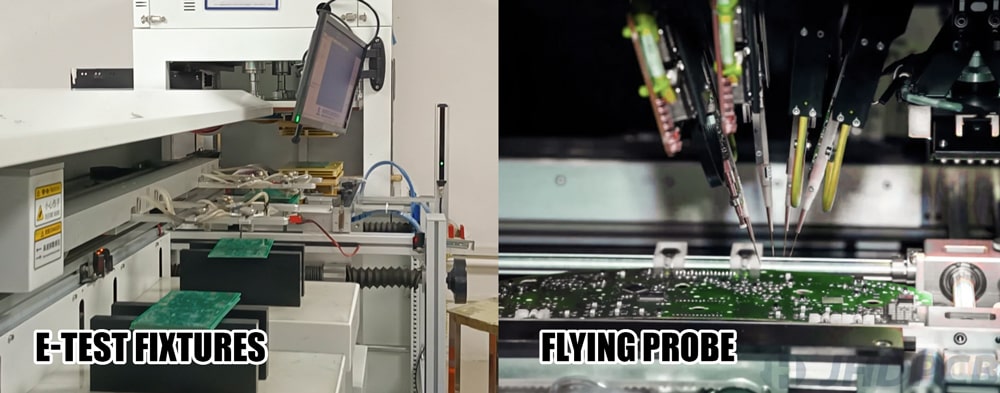
| E-Test Fixtures (bed of nails) (All points are tested simultaneously) |
Flying Probe (All points are tested simultaneously, however, this process involves both setup time to create the fixture and additional costs associated with the cost of materials.) |
| Electrical test pitch = 0.020" | Electrical test pitch = 0.040" |
| Setup time: 30 minutes | Setup time: 0 minutes |
| Learn time: 0 minutes | Learn time: 20 minutes |
| Debug/ check for missing pins: 10 minutes | Test time per board: 6 minutes |
| Test time per board: 40 seconds | Test time per board: 40 seconds |
Copper plating is where a PCB actually becomes a PCB.
— POE PCB/PCBA Manufacturer (@poe_pcba) November 21, 2025
PTH walls get reinforced, traces gain real current-carrying strength, and weak spots are eliminated.
Miss this step, and reliability is gone.
Plating isn’t cosmetic — it’s electrical integrity. #PCB #Electroplating #HDI pic.twitter.com/hExZX1OU5t

Since 1996, POE has become a globally renowned PCB company, providing small to medium volume PCB/ PCBA manufacturing services.













